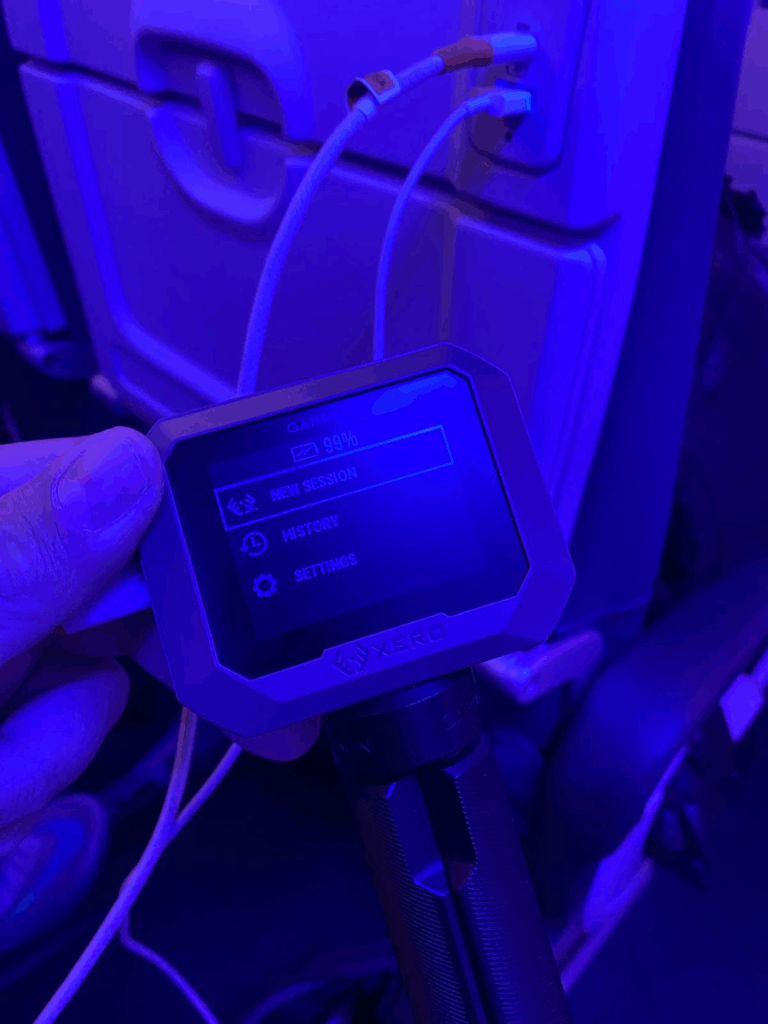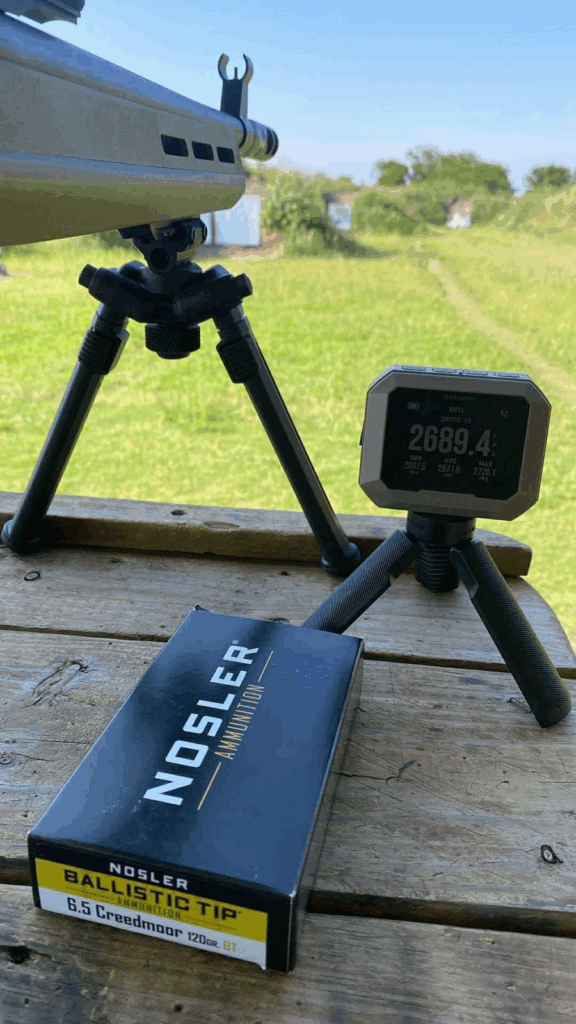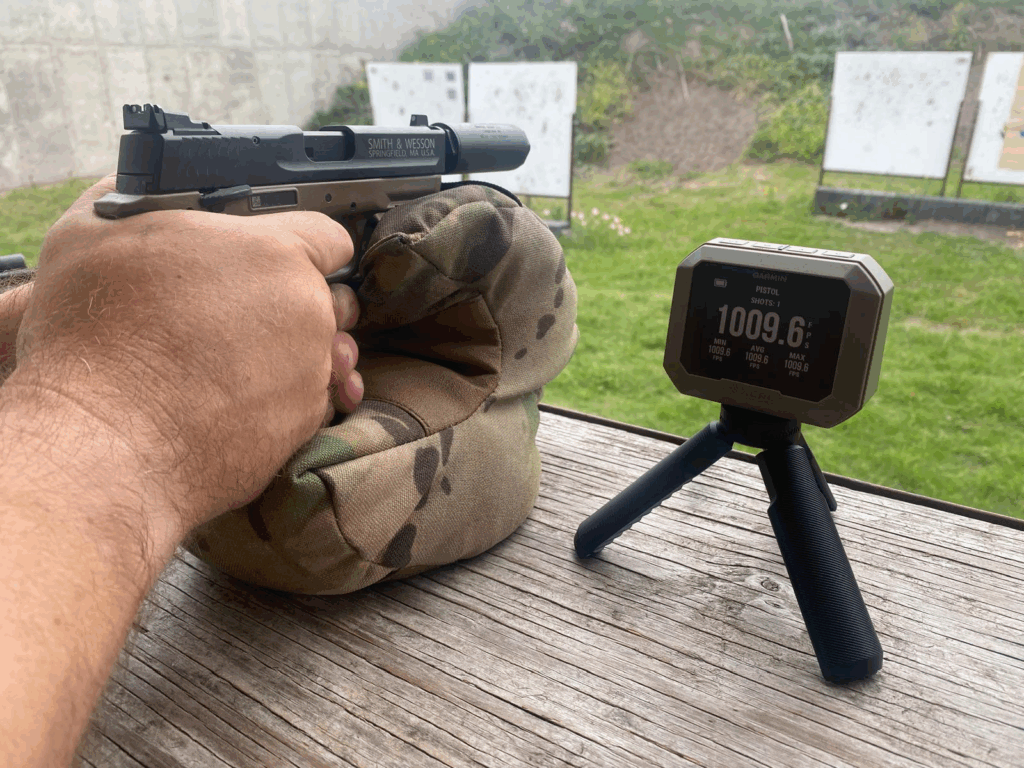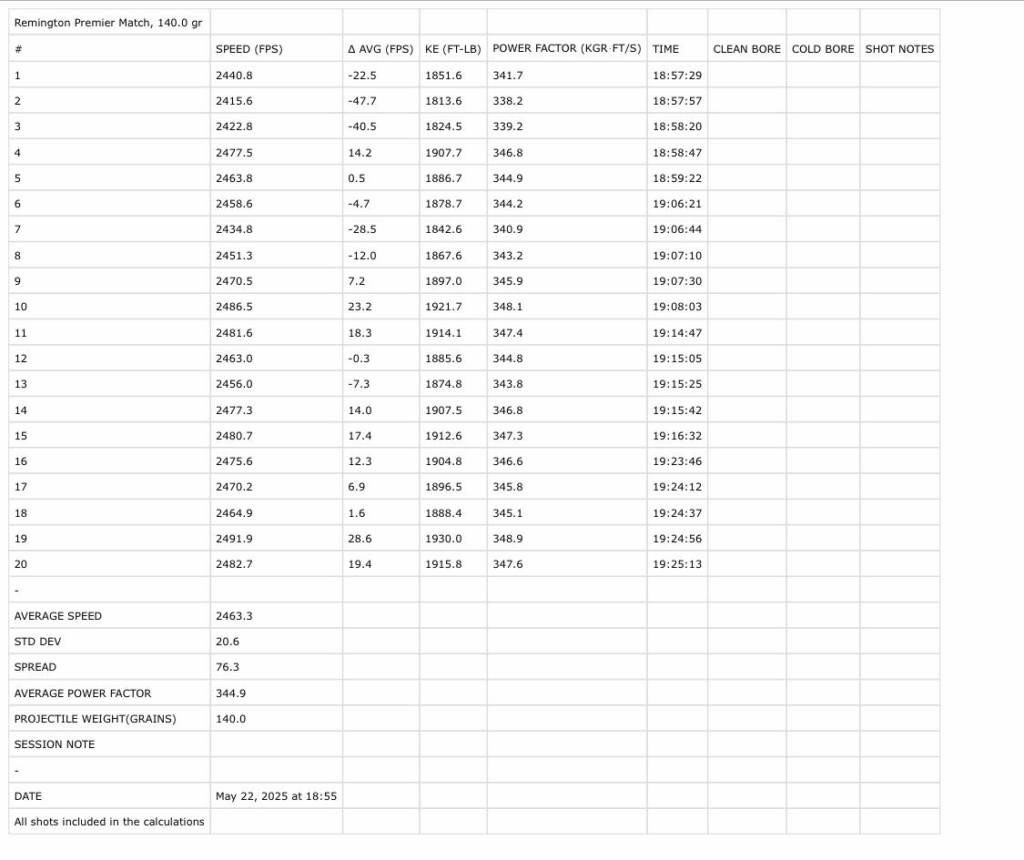This isn’t a review per se; rather, it’s a post about appreciation for the Garmin Xero C1 Chronograph. This handy pocket-sized chronograph is one of my most indispensable tools that I rely on as a shooter.
The Garmin Xero C1 Chronograph
At the risk of using cliched and tired adjectives, the Garmin Xero C1 really is a revolutionary game-changer.
There, I said it! I never use adjectives like those in my work.
It’s kinda too late now, since you’ll likely be reading this in June 2025. But after purchasing my own Garmin Xero C1 last summer and using it on a regular basis, I wanted to proclaim it as the unofficial “P.E. Fitch shooting accessory/product of the year for 2024.”
This little chronograph makes my life easier. As a writer and reviewer, having access to firearm and cartridge muzzle velocity is crucial. Without a doubt, most gun publications require writers to share muzzle velocity figures. They always have, and it’s hard not to love a time-saving tool that makes the most tedious part of reviewing any firearm that much easier.
Sure, this prima facie level of convenience that the Garmin Xero C1 provides is laudable, but I don’t think that’s its most remarkable aspect either. No, what blows me away is that when bundled as a system with its mobile phone app, the Garmin Xero C1 turns into an extremely powerful information-gathering system. Never has it been so easy to collect, store, and access gun-and-cartridge telemetry in one fell swoop.
How can you not love a device that makes capturing expensive information so easy?
Game Recognize Game: Farewell To The Labradar
I almost don’t feel qualified enough to be writing this. I’ve only owned and used two different chronographs in my life. The first was a Labradar, and the second is my Garmin, which has since replaced it. Because I started writing about firearms only roughly three years ago, I was able to cut in line away from dealing with whimsical traditional chronographs that were sensitive to light, had to be set up a certain way, and/or had the two triangular-shaped antennae that one had to carefully shoot through. I never had to deal with those types of inconveniences.
I plunked down $675 in February 2023 for my Labradar. It wasn’t cheap. At the time, I was starting to get more serious about writing firearms articles, so I wanted the most serious chronograph I could get my hands on.
And prior to Garmin disrupting the consumer-grade chronograph market, the Labradar was pretty much the top dog in its category. Since its launch in 2014, the Labradar wasn’t as clunky or cumbersome as the traditional bunny-eared chronographs, and it was objectively the best choice. Mind you, it still had its quirks, but it was hard to beat—until Garmin dropped that bombshell.
Using The Labradar Before The Garmin
For context, when the Labradar was arguably the top-of-the-line model, the unit was still relatively expensive. By all means, it captured accurate data.
But as a user, you still needed to purchase its power source and a stand separately. This added to its overall cost and complexity. I used a laser-level tripod–the same as a basic camera tripod. It was tall enough to shoot next to in a free-standing tactical bay.
The Labradar accepted six AA batteries, but it was also a power-hungry device, which basically made it mandatory to use some type of external power bank.
While the setup isn’t as complicated as a traditional chronograph, the unit was more sensitive to muzzle placement. Likewise, it was more sensitive to both rimfire and hot magnum rifle rounds (or rifle barrels with muzzle brakes). It was possible to adjust the settings, but that wasn’t super smooth either.
For rimfire or suppressed use, they sold a separate “microphone” that would pick up shots for the main device. I found that there was a learning curve to understanding how to capture muzzle velocities with the Labradar. Prior to capturing velocities, you had to ensure the device was pointed precisely at your target. Its exterior housing had a rough sighting notch meant to serve as a rudimentary sight.
Unfortunately, there were many times when it failed to capture and record many a rifle shot. And that feels quite aggravating when a cartridge costs over $2.00 each! But at the time, I’d argue it was top of the line. (I never messed with rifle-mounted chronographs because I work with so many handguns.)
The Garmin Xero C1 In A Nutshell

With the full understanding that the Garmin team had years of hindsight to take into account after the launch of the Labradar, it wasn’t hard to topple the previous king by the time Xero C1s started rolling out.
The Garmin Xero C1 is far easier to set up and shoot with. It doesn’t need a separate stand. It also has a USB-C rechargeable self-contained battery that charges like a cell phone. The best part? It’s very small. It’s not hard to fit the Xero in a pocket. It weighs nothing and stows easily. It’s almost easy to take for granted that its 6-hour internal battery can be charged in the car on the way to the range.

When shooting, it’s far more forgiving and way more convenient when it comes to placement around the firearm, be it a handgun or rifle. It has no problem recording suppressed shots or shots fired from anything rimfire.

The Garmin companion app (Shotview) for mobile phones easily talks to the Xero C1. It sends all the data, sorts it categorically by rifle or pistol, and makes information easy to find. The app also provides the end-user with extra opportunities to label and display each “session.” No need to take notes or write stuff down externally. It’s all there. Finally, each session can be easily exported as a CSV (spreadsheet) automatically.
Capturing Expensive Information Easily

Capturing ballistic information isn’t cheap. It’s not just the obvious costs associated with the ammunition or handloads that get fired into the berm. It’s also the effort involved in taking time to go to the range and setting everything up needed to capture this information. Time is a precious commodity.
Using the Garmin as a system saves time both on the front and back ends. Unlike the Labradar, which might have missed a shot, my Xero C1 seldom misses any shots, especially when shooting deliberately. Its easy setup is also a giant time-saver, and the device can sit right on the bench or to the side of the shooting mat, behind the muzzle. By compiling the data into the Shotview app, it saves time on that front, too.

I think the implications of a convenient chronograph go beyond easy setup and ease of use. That it’s able to collect muzzle velocity data so effortlessly also means that it has never been easier to compile ballistic information. For the handloaders and really big-brain types, they can build metaphorical rifle-shooting goldmines with this information.
So yes, I think the Garmin Xero C1 chronograph warrants the term “gamechanger” for once.
Post Script
Now that it’s mid-2025, the Garmin Xero C1 has some direct competition. It wasn’t long after Garmin introduced the Xero C1 that Labradar also came up with a similar direct competitor. By now, Athlon Optics sells a Xero C1 competitor for approximately $150 less. I have no serious opinions on either of these Garmin competitors, but it’s worth mentioning that they are out there. I’ve never shot with either of them.
As for me, well, I spent a nice chunk of change buying both the Labradar and the Xero C1 within the span of a year. I’m tapped out on chronograph funds. As expensive as it was, the Garmin has been indispensable.
For more information, read Sean Utley’s full review of the Garmin Xero C1 chronograph.
Read the full article here











